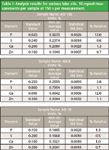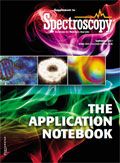EDXRF Analysis of Lube Oils per ASTM D6481
The measurement of P, S, Ca, and Zn in lube oil is demonstrated as per ASTM D6481-99(2010).
The measurement of P, S, Ca, and Zn in lube oil is demonstrated as per ASTM D6481-99(2010).
ASTM D6481 is a standard test method for measuring lube oil using EDXRF. Quality control and quality assurance during the lube oil manufacturing process is essential. A fast, simple method of analyzing lube oils is important throughout the QC/QA process. Rigaku meets this industry need with a high performance low cost benchtop EDXRF system. Rugged and reliable, the NEX QC is an ideal tool, with simple and intuitive software for the non-technical operator.
Experimental Conditions
Each sample should be homogeneous and stable. A 32 mm XRF sample cup ¾ full (5g) of sample was prepared.
Empirical calibrations were built using a suite of 16 commercially available calibration standards. The suite of calibration standards must be representative of the lube oil formulation to be analyzed. Use of empirical calibration ensures the particular lube oil formulation is exactly characterized and modeled, which yields optimum accuracy. Elements in the lube oil should vary evenly over each concentration range of interest, and the elements in the oil should vary independently of each other. Alpha corrections are then employed to automatically compensate for variations in X-ray absorption and enhancement effects within the sample due to the independent variations in element concentration.
Three representative samples from the calibration suite were chosen to demonstrate typical instrument repeatability (precision). Ten repeat analyses were performed with the sample in static position using a total analysis time of 150 s.
Results
The empirical method was used to determine detection limits. In the empirical method, 10 repeat analyses of a blank lube oil (or mineral oil) sample are taken with the sample in static position, and the standard deviation is determined. The lower limit of detection (LLD) is then defined as three times the standard deviation.

Table I: Analysis results for various lube oils. 10 repeat measurements per sample at 150 s per measurement.
Conclusion
The results demonstrate excellent performance for basic lube oil formulations using NEX QC. Given standards assayed for Ba, the Ba content can also be measured over similar concentration ranges. Fast and simple, the NEX QC is an ideal tool for monitoring and controlling lube oil add packs and lube formulations during blending and process QC.
Applied Rigaku Technologies, Inc.
9825 Spectrum Drive, Bldg. 4, Suite 475, Austin, TX 78717
tel. (512) 225-1796
Website: www.RigakuEDXRF.com
